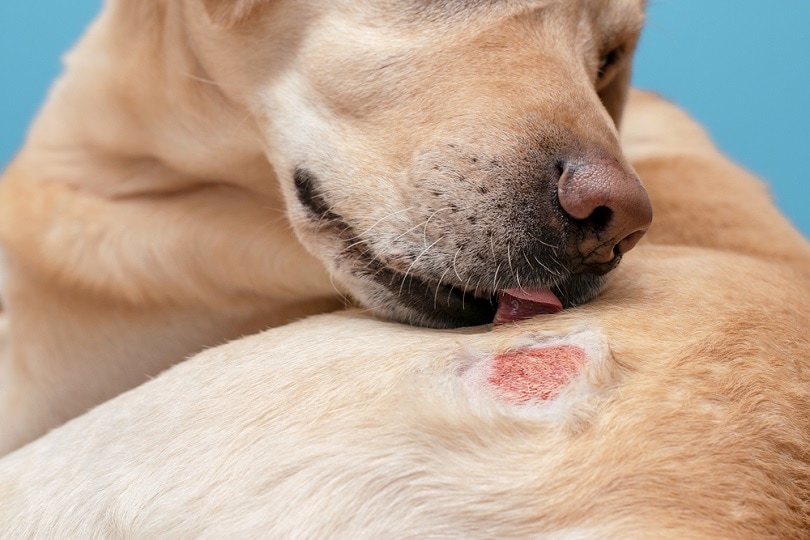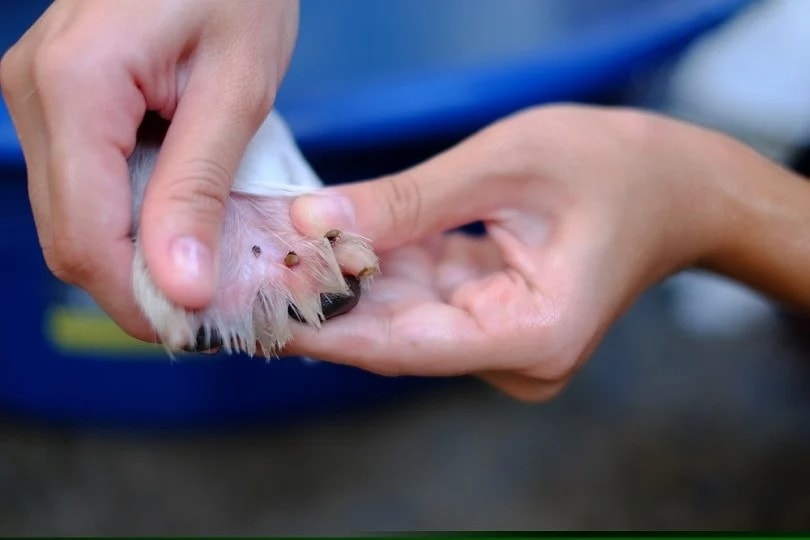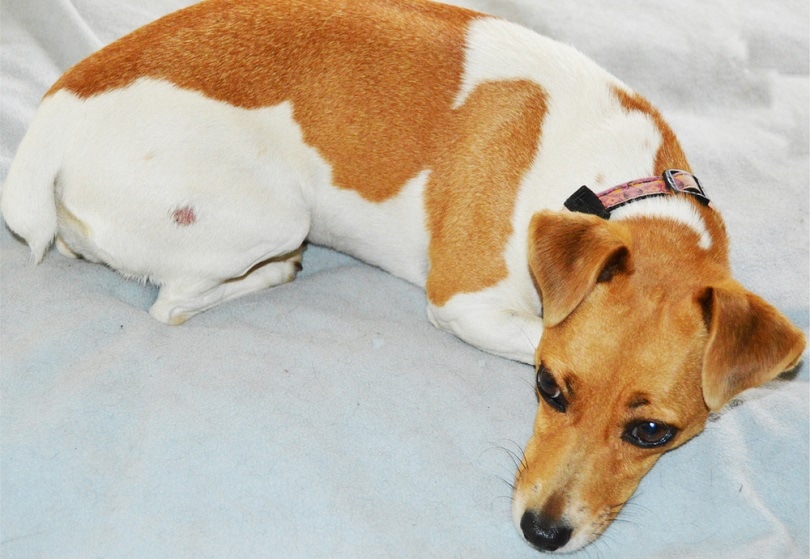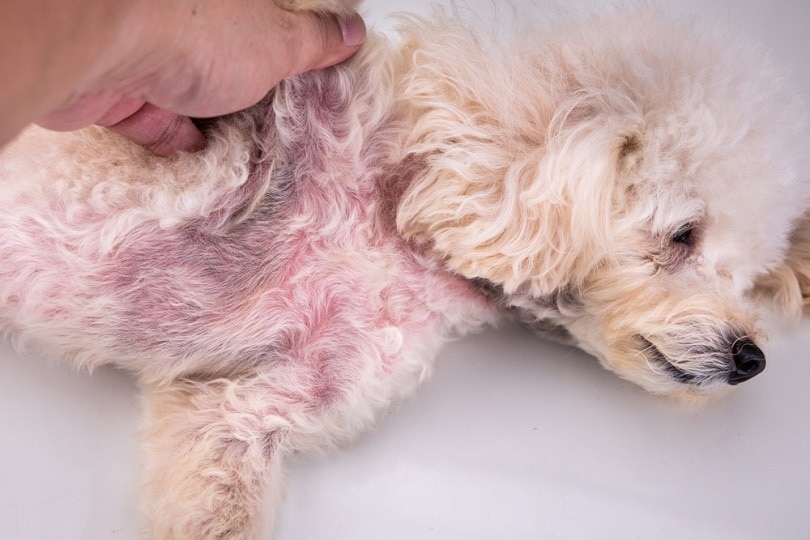
Did you know that skin issues are some of the most common medical problems in dogs? You may not think about your dog’s skin very often since it’s covered in fur, but as with humans, the skin is the largest organ in your dog’s body. Your dog’s skin is very sensitive to their environment and can be impacted by some of the same problems you may encounter, such as allergies. Keep reading if you want to learn more about the most common skin issues in dogs.
Common Signs of Skin Conditions in Dogs
Before we discuss potential causes for skin discomfort in dogs, let’s first identify some signs you should keep an eye out for.
Itching is one of the most common signs that something might be amiss. Of course, it’s normal for your dog to have an itch every now and then. However, if you find that itching is happening more frequently than usual, you should keep your eye out for other signs that could indicate an underlying problem.
Other common signs of a skin issue are sores, redness, rashes, lumps, and bald or scaly patches. Many different kinds of skin conditions share these common signs, so it is important to make sure you go to the vet if you think there’s an issue to ensure your dog gets the proper diagnosis and treatment. Keep track of your dog’s signs and, if possible, try to notice early when they occur and even keep a diary. The more information you can provide to the vet, the more accurate the diagnosis is likely to be.
The 10 Most Common Skin Issues in Dogs
Now that you know a little bit more about what signs to look for, let’s talk about the common skin issues that could be causing them.
1. Dry Skin

Dry skin is typically characterized by flaking or dandruff and may also be accompanied by redness if your dog has been scratching.
2. Hot Spots

Hot spots are areas of your dog’s body where they have been itching and licking a lot due to irritation. Your dog’s frequent itching and licking are likely caused by another condition. These hot spots might be accompanied by a foul odor and discharge, are often infected, and may spread.
3. Impetigo

Impetigo is a type of skin infection that is seen most often in puppies. It is usually caused by an overgrowth of bacteria in poor and unhygienic conditions, but it is not contagious. Impetigo is characterized by pustules and crusts on your dog’s stomach, in their armpits and groin area. Your vet will be able to treat this condition with topical medication or medicated shampoo.
4. Folliculitis
The name folliculitis refers to your dog’s hair follicles. With folliculitis, your dog’s hair follicles will become inflamed, resulting in sores, scabs, or bumps. A dog with folliculitis may be experiencing another skin condition such as allergies.
5. Fleas and Ticks

Fleas and ticks are parasites that survive by biting and feeding of your dog. Some dogs have parasite allergies that can cause them to itch. If you see your dog scratching, chewing their fur, or balding, they may have fleas or ticks. In addition to veterinary-approved medication to treat your dog’s ticks or fleas, make sure your dog is up to date with any preventative oral or topical medication. You should also keep in mind that fleas can live in your carpet and bedding, so you should make sure to wash your dog’s bedding and vacuum regularly to make sure you kill any remaining bugs.
6. Ringworm

Ringworm is not a worm, but a fungus. Ringworm is very contagious to other dogs and even humans. You can identify this infection by the tell-tale circular patches on your dog’s skin. You may also notice inflammation and redness around the patches where your dog has been scratching. If you suspect your dog has ringworm, let your vet know immediately so that you can treat the fungus and prevent it from spreading further. If you develop any skin changes, speak to your GP or a dermatologist.
7. Dandruff
Yes, your dog gets dandruff, too! Dandruff may be a sign of another condition, or it could simply be an indication that your dog’s skin is too dry. Dandruff is easy to treat, but it may be a good idea to check in with the vet to make sure that nothing else is going on.
8. Yeast Infections

If your dog has a yeast infection, it will most often show up on their paws, ears, and skin folds. You might be able to identify a yeast infection due to the strong, unpleasant smell. Yeast infections are not contagious and can usually be treated with topical medications prescribed by your vet. It’s important to establish what has led to the fungal infection so it can be treated appropriately.
9. Mange

Mange is a skin condition that is caused by mites on your dog’s skin. There are two different types of mange: demodectic and sarcoptic. Sarcoptic mange is also referred to as scabies and is contagious to both humans and animals. Demodectic mange usually affects very young dogs, immunocompromised, or older dogs. Your dog may have mange if they have been having hair loss, redness, and itching.
10. Lupus
Lupus is the most serious condition on this list. Lupus is an autoimmune disease that is characterized by hair loss, discoloration of your dog’s nose, and skin problems on your dog’s paw pads and face. Lupus can also cause damage to internal organs and can be fatal if not diagnosed and treated in time.
Final Thoughts
All dogs scratch themselves sometimes. However, if you notice excess scratching or other signs such as discharge, odors, redness, or hair loss, it’s time to take your dog to the vet to make sure there isn’t something else going on. Although most of the conditions on this list are not very serious, constant itching can have a very negative impact on your dog’s quality of life. The sooner you get your dog checked out when you think something could be wrong, the sooner your dog will return to their happy, healthy self.
- Next on your reading list: 8 Best Mange Treatments for Dogs in – Reviews & Top Picks
Featured Image Credit: Zivica Kerkez, Shutterstock







